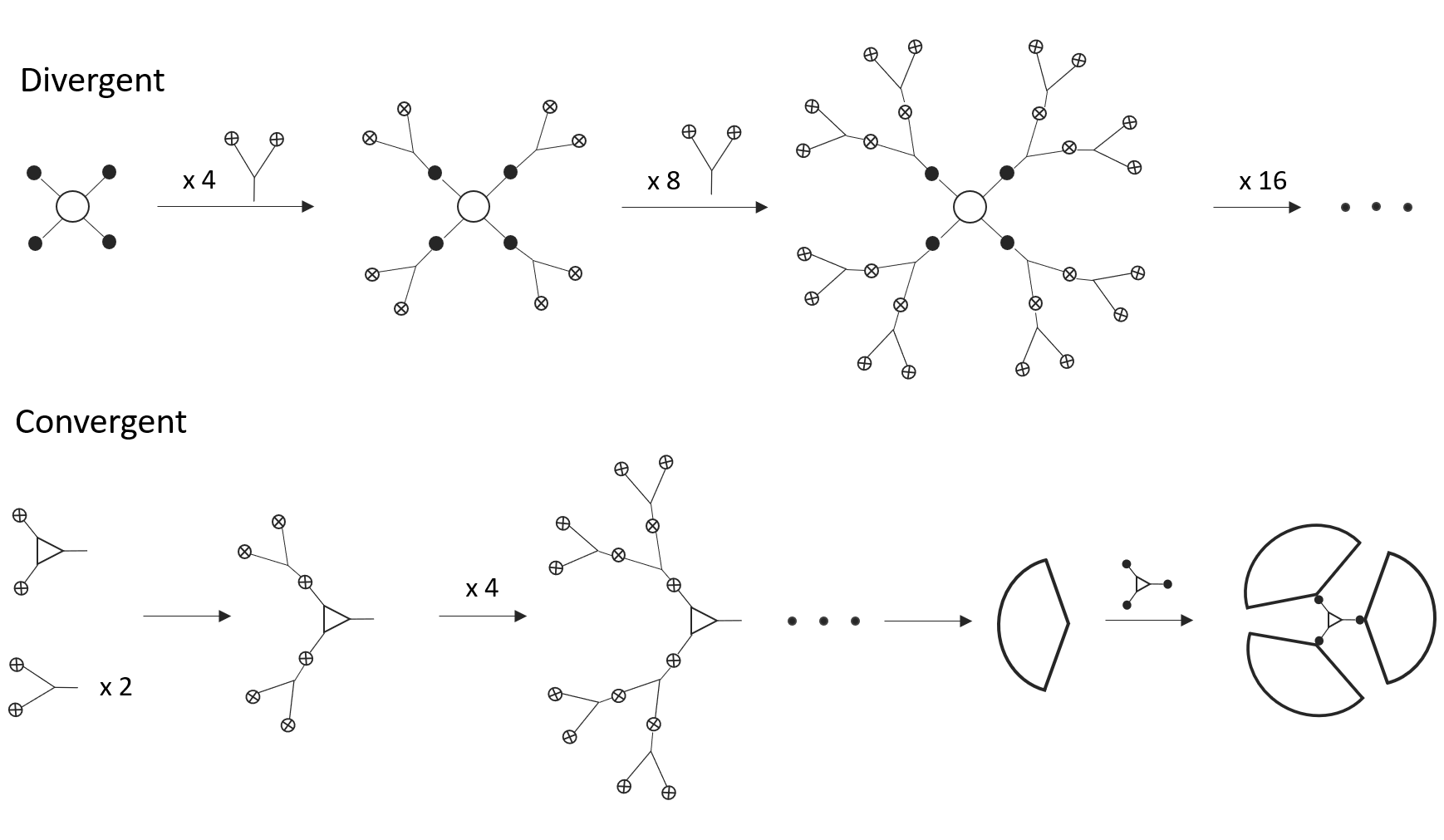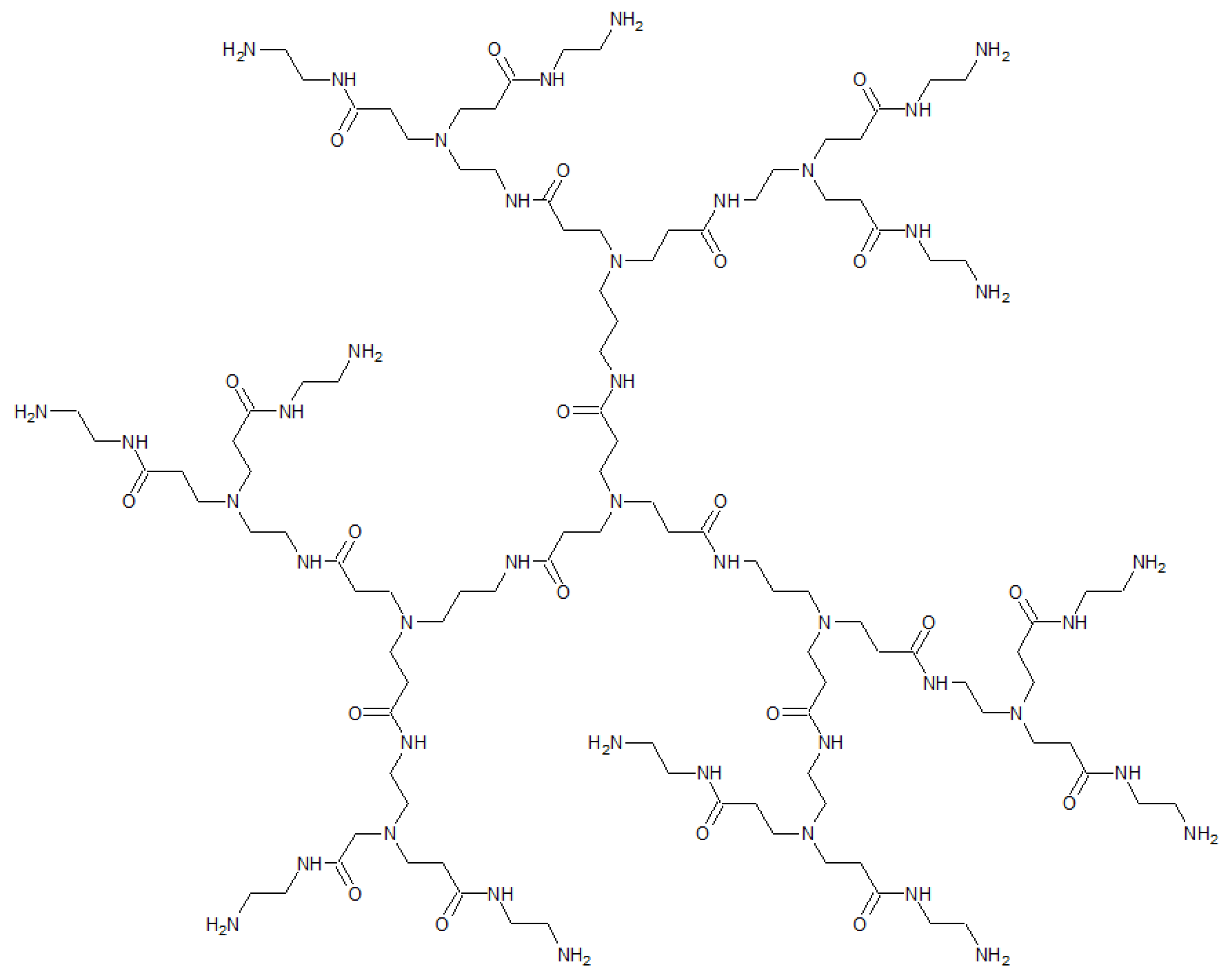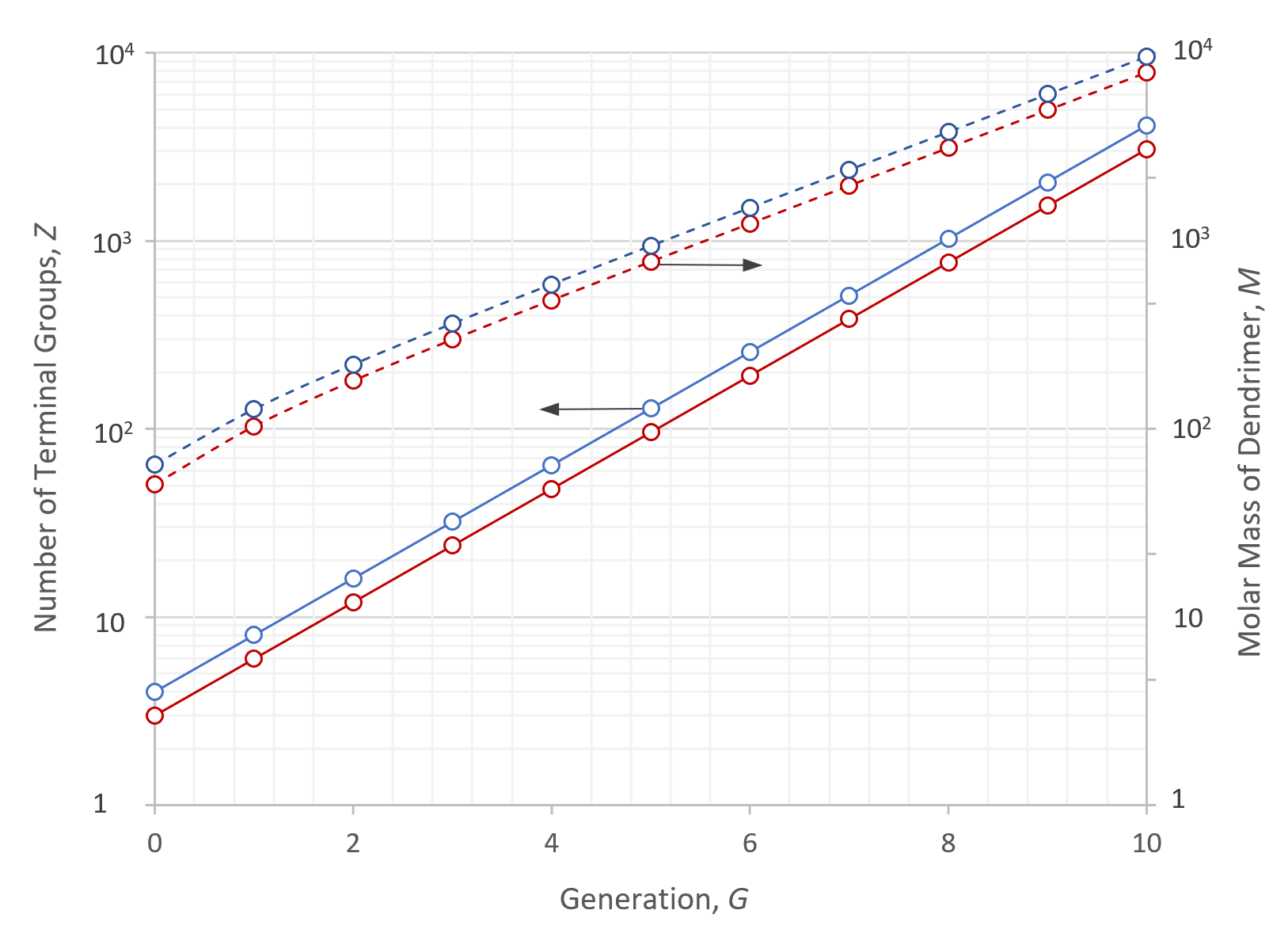Hyperbranched Molecules
Part II: Synthesis of Dendrimers
Dendrimers can be prepared using either a divergent or a convergent method. In the case of a divergent synthesis, growth starts with a multifunctional core molecule. Each functional group of the core reacts with a multifunctional molecule giving the first generation dendrimer. Then a second type of monomer is added that reacts with the functional groups of the first generation molecules. The process is repeated for several generations which leads to highly symmetric dendrimer molecules, often referred to as starburst polymers.1 Note, each step has to be driven to full completion before starting another generation to ensure that all branches are of same length.

The divergent approach is well-suited for the synthesis of large quantities of (large) dendrimer molecules. However, a large excess of reactant is often required to minimize side reactions and/or to force each reaction step to full completion.4 This makes subsequent purification of the final product difficult. To overcome these problems, convergent methods were developed.2 In this case, the synthesis starts with the end groups, the monomers that will become the surface of the dendrimer, and progresses inwards.3 This method creates wedges or dendrons which will be attached to a multifunctional core molecule in a final step. The convergent growth method creates fewer defects in the final structure and the final product is easier to purify. The method can also be used to create heterogeneous dendrimers, i.e. multifunctional macromolecular structures. However, the size of the dendrimers grown this way is limited due to crowding in the center which restricts the size of the wedges that can be attached to the core.
Some of the oldest and best known dendrimers are based on polyamidoamines,1 which are generally prepared using a divergent method. The core is typically a tri- or tetra-functional amine such as ammonia or ethylene diamine. In the case of ammonia, three times the amount of methyl acrylate is added which undergoes a Michael addition reaction with the amonia giving a star polymer with three arms (see below). In the next step, three times the amount of ethylene diamine is added to form a molecule with six arms. These steps are repeated multiple times to yield a star polymer which is often abbreviated as PAMAM or Starburst.6

The polymer growth by alternate Michael additions. After two more cycles the dendrimer looks like this

The number of branches and reactive end groups is doubled with every generation that is dendrimers grow geometrically (see Table below).
| Generation |
Molecular Mass Ammonia / EDA Core |
No. of Terminal Groups Ammonia / EDA Core |
||
| 0 | 359 | 516 | 3 | 4 |
| 1 | 1043 | 1428 | 6 | 8 |
| 2 | 2411 | 3252 | 12 | 16 |
| 3 | 5147 | 6900 | 24 | 32 |
| 4 | 10619 | 14196 | 48 | 64 |
| 5 | 21563 | 28788 | 96 | 128 |
| 6 | 43451 | 57972 | 192 | 256 |
| 7 | 87227 | 116340 | 384 | 512 |
| 8 | 174779 | 233076 | 768 | 1024 |
| 9 | 349883 | 466548 | 1536 | 2048 |
| 10 | 700091 | 933492 | 3072 | 4096 |
The geometric increase of the number of dendrimer terminal groups can be written as a function of core (nc) and branch multiplicity (nbr):1
Z = nc nbrG
where G is the number of generations. With the exception of the first few generations, the molar mass of dendrimers M also (approximately) doubles with each generation. By inspecting the geometry of dendrimers, Tomalia et al. derived following equation to relate the molar mass of starburst dendrimers to the core and branch functionality:
M = Mc + nc [Mbr (nbrG - 1) / (nbr - 1) + Mt nbrt ]
where Mc, Mbr, and Mt are the molar mass of the core, the branched monomer, and terminal groups.

References & Notes
D.A. Tomalia, H. Baker, J.R. Dewald, M. Hall, G. Kallos, S. Martin, J. Roeck, J. Ryder, & P. Smith, Polym. J. Vol. 17, No. 1, 117-132 (1985)
C.J. Hawker & J.M.J. Frechet, J. Am. Chem. Soc. 112, 21, 7638-7647 (1990)
A dendrimer should not be confused with a dendron which describes a dendritic wedge without a core.
B. Klajnert and M. Bryszewska, Acta Biochimica Polonica, Vol. 48, No. 1, pp. 199-208 (2001)
-
Donald A. Tomalia, Jean M. J. Frechet, J. Polym. Sci. Part A: Polym. Chem., Vol. 40, 2719 - 2728 (2002)
-
Starburst is a trademark of the Dow Chemicals Company.